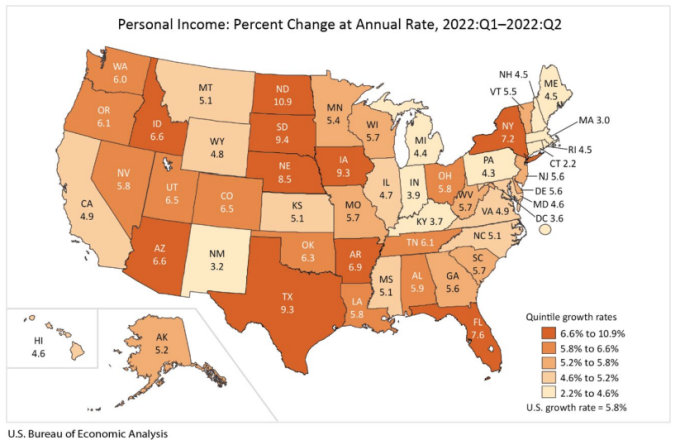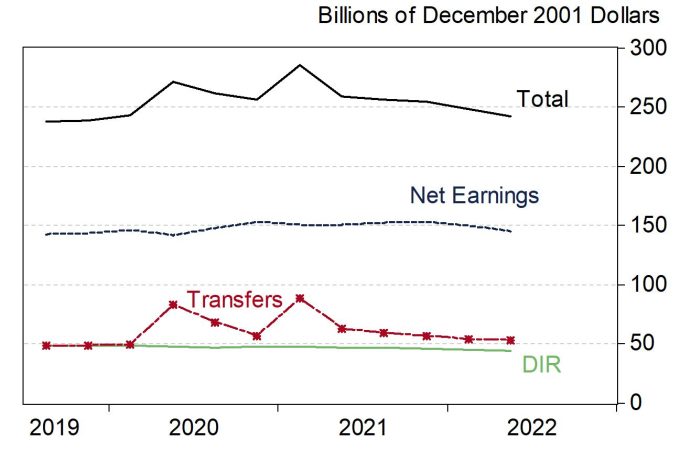Arizona personal income growth beat the nation in second quarter, but lagged behind inflation.
Arizona personal income rose by 6.6% at a seasonally-adjusted annual rate before adjustment for inflation in the second quarter of 2022. That beat the national average of 5.8% and ranked the state ninth in the nation (Exhibit 1). Connecticut posted the slowest increase in the second quarter (2.2%) and North Dakota posted the fastest (10.9%).
READ ALSO: Metro Phoenix No. 1 in the nation for highest inflation
Exhibit 1: Personal Income by State, Percent Change at Annual Rate, 2022:Q1 – 2022:Q2
In the second quarter, Arizona’s personal income growth was driven by net earnings from work, supported by solid contributions from dividends, interest, and rent and transfer receipts. Transfer receipts includes Social Security, Medicare, Medicaid, welfare, unemployment insurance, and other government payments to households.
Over the year, Arizona nominal personal income was up 4.5% in the second quarter, driven by gains in net earnings from work and dividends, interest, and rent. Transfer receipts were down 5.6% over the year reflecting diminishing federal income support related to the pandemic. Arizona’s income growth outpaced the national average increase of 3.4% over the year.
On an inflation-adjusted basis Arizona personal income continued to trend down in the second quarter of 2022. Using the Phoenix MSA all-items Consumer Price Index (CPI-U), Arizona real personal income dropped by 9.1% at a seasonally adjusted annual rate in the second quarter. That was the fifth consecutive quarter-to-quarter drop on an inflation-adjusted basis (Exhibit 2).
Exhibit 2: Arizona Real Personal Income, Billions of December 2001 Dollars
With this release BEA revised income data back to 2017. The latest estimates put Arizona’s nominal per capita personal income (using their estimate of population) at $55,487 in 2021, which was 86.5% of the national average of $64,143.
Arizona’s nominal per capita personal income rose 6.0% in 2021, down from 8.7% in 2020. Income gains in both years were boosted by the huge federal income support related to the pandemic. Arizona’s per capita income growth was well short of the U.S. in 2021 (7.3%).
Arizona’s per capita disposable income (after tax, before adjustment for inflation) was $49,555 in 2021, 88.3% of the nation (at $56,130). Arizona’s disposable income rose by 4.7% in 2021, down from 9.7% in 2020 and below the U.S. at 5.9%.
George W. Hammond, Ph.D., is the director and research professor at the Economic and Business Research Center (EBRC).






